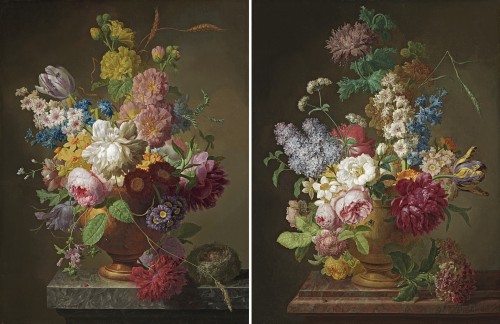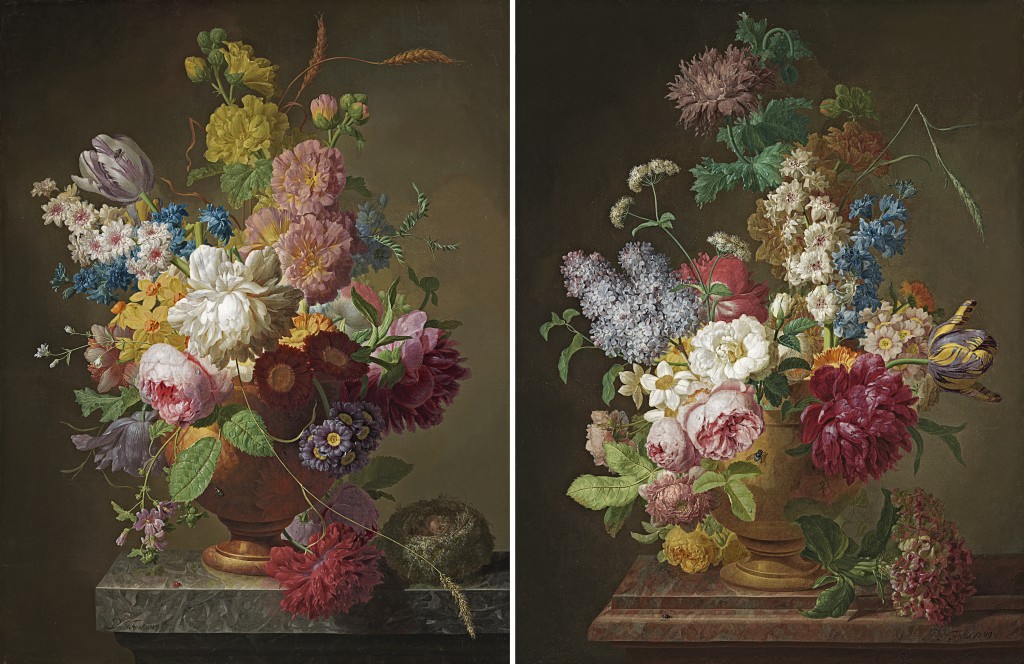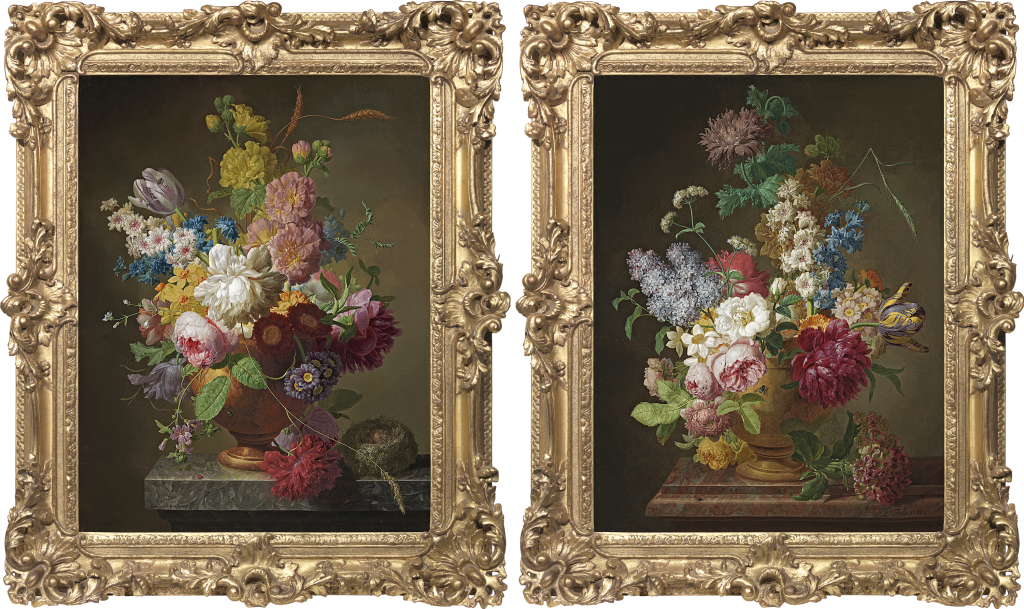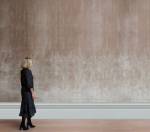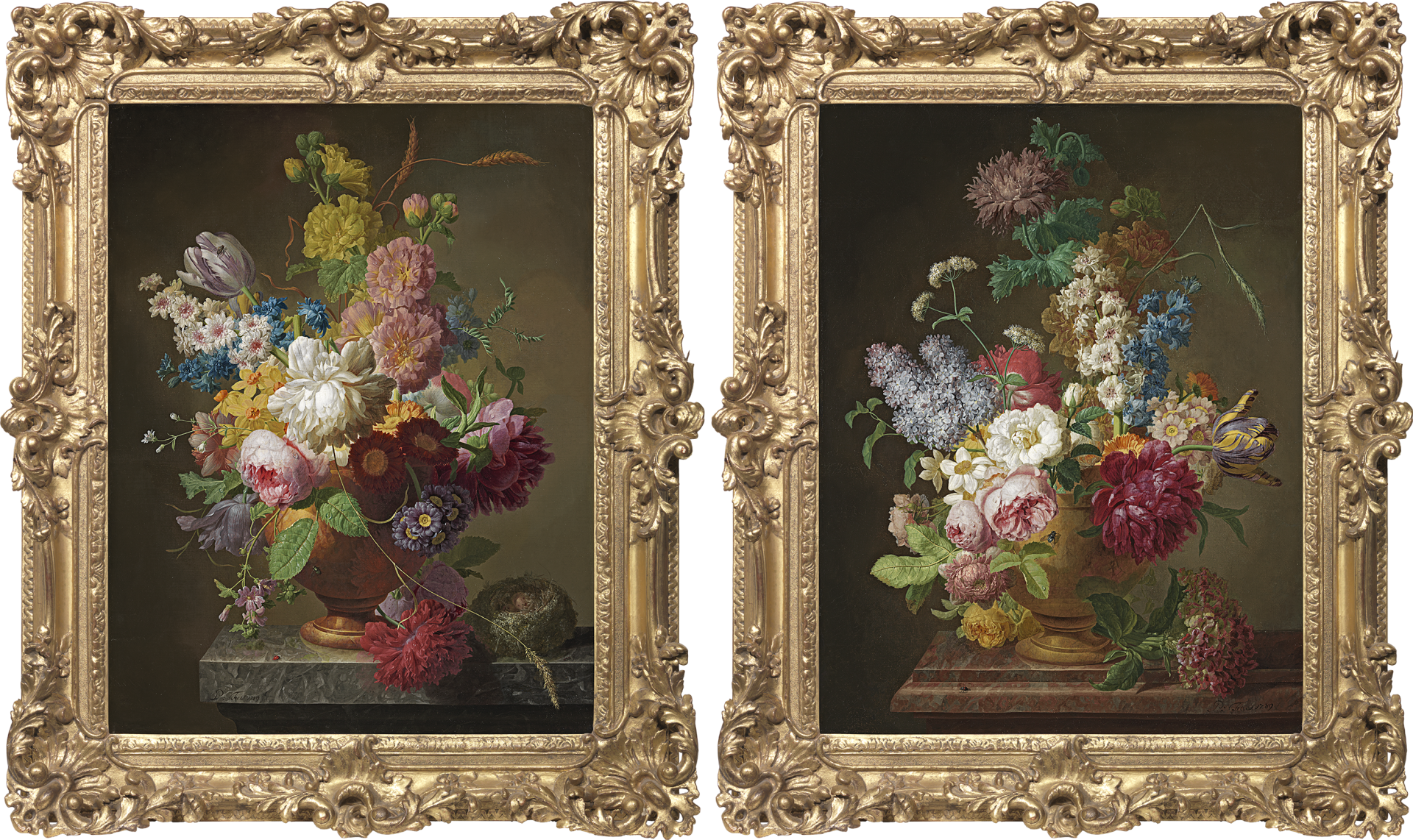PIETER FAES
Meir 1750 – 1815 Antwerp
Ref: CC 159
Still life with a rose, peonies, tulips, narcissi, hollyhocks, double hyacinths, auriculas and other flowers in a hardstone vase on a marble ledge, with a bird’s nest
Still life with roses, a tulip, peonies, narcissi, lilac, poppies and other flowers in a hardstone vase on a marble ledge, with a sprig of hydrangea and a fly
A pair, the former signed and dated lower left: P: Faes 1789; the latter signed and dated lower right: P:Faes . 1789
Oil on canvas: 28 ½ x 22 in / 72.4 x 55.9 cm
Frame sizes: 36 ½ x 30 in / 92.7 x 76.2 cm
Provenance:
Martin Colnaghi, London, by 1888 and until at least 1908
Christie’s London, 14th December 1956, lots 106 and 107
Rayner MacConnal, London, by 1957
Private collection, UK
Sotheby’s London, 3rd December 1997, lot 92;
where acquired by Richard Green, London;
private collection, Europe
Exhibited:
London, Royal Academy, Winter Exhibition of the Works of the Old Masters, 1888, nos.54 and 60 (lent by Martin H Colnaghi)
London, Royal Academy, Winter Exhibition of the Works of the Old Masters, 1908, nos.56 and 58 (lent by Martin H Colnaghi)
Literature:
The Burlington Magazine, vol.XCVIII, December 1956, p.ii, both illus.
Pieter Faes trained at the Antwerp Academy of Arts, where he was doubtless taught to paint the human figure in the academic tradition and to include it in historical scenes. His known oeuvre, however, consists only of still lifes, mostly of flowers, but also of fruit. Pieter Faes became a Dean of the Antwerp painters’ guild in 1791. Between 1782 and 1784 he executed works for the rebuilt royal palace at Laken, which were later removed to Vienna (and have since disappeared).
Faes’s earliest dated flower painting, a small bouquet of 1780 (on the art market in 1992)
is quite loosely painted, using thin layers. A more ambitious bouquet of 1782 (Private collection; photograph in Rijksbureau voor Kunsthistorische Documentatie, The Hague)
already shows a tighter handling of paint, and as a whole shows that Faes studied the work of Jan van Huysum closely. The use of a garden vista in the former picture, and a decorative urn and Crown Imperial flower in the latter, bear witness to van Huysum’s influence. From the mid-1780s, Faes preferred plain backgrounds and only occasionally (perhaps commission) painted his bouquets before a garden vista. He soon abandoned van Huysum’s undulating, restless composition for compact bouquets set on marble or other stone slabs.
The present pair of flower paintings is in every respect characteristic of Pieter Faes’s mature work. Similar marble ledges, grey-green backgrounds and sturdy hardstone vases
can be found in many of his works. As with most of his floral still lifes, the central flowers are spotlit. This pair of paintings shows Faes’s preference for forceful colours: warm red, strong blue, bright white and orange among the fresh green of the leaves.
Unlike many of his predecessors and contemporaries, Faes does not build his bouquets
along a curve, perhaps because these works were intended as pendants. When composing
them Faes made a point of attuning them to each other by a clever combination of
contrasts and similarities. The marble tables occupy the same space in each work. The
bouquets seem to bend slightly toward each other, an effect which is mainly accomplished
by the positioning of the brightly lit white double hyacinths in each picture. Each painting
has a tiny, contrasting insect on the ledge - a ladybird in one, a black beetle with red dots
in the other. A fly on the white and violet tulip is a superb feat of trompe l’oeil painting.
Faes’s choice of flowers is characteristic both of the artist and the period. Roses, tulips,
narcissi, poppies and anemones already abound in seventeenth century flower paintings; hollyhock and lilac gained popularity after the turn of the century, as well as new, larger and fuller varieties of the hyacinth. The yellow and violet tulip appears to be a variety of the second half of the eighteenth century. It was depicted by other artists of the period, such as Willem van Leen, Jan Frans van Dael and the Spaendoncks, but not by the earlier van Huysum.
Auriculas, first occurring in late seventeenth century paintings, were a ‘must’
for eighteenth century painters. Like most of his colleagues, Faes combined cultivated
flowers with wild species, such as the saxifrage, parsley, ears of wheat and grasses depicted here. The only slightly unusual flower is the hydrangea at the foot of the vase in one painting.
Although he portrayed the same varieties of flowers again and again, Faes does not seem
to have relied on a restricted stock of studies: each bloom seems to have been observed
anew. His detailed attention to texture is apparent in the flowers, the marble and the bird’s
nest. It is interesting to note that in both paintings the seemingly matt vase shows a reflection of a flower and the grey ledge reflects the colours of the flowers and leaves above it.
The work of Pieter Faes is represented in the Groeninge Museum, Bruges; the Musée Royale des
Beaux-Arts, Brussels; the Fitzwilliam Museum, Cambridge; the Rijksmuseum Twenthe,
Enschede and the Metropolitan Museum of Art, New York.
Essay by Dr Fred G Meijer of Fred G Meijer Art History, specialist in seventeenth and eighteenth century Netherlandish still life and formerly Senior Curator of Old Dutch and Flemish Painting at the Rijksbureau voor Kunsthistorische Documentatie (RKD, Netherlands Institute for Art History).

